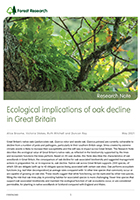Read our news and other articles relating to our activities. You can also find out what we’re up to by following @Forest_Research on Twitter or through the Forest Research Vimeo channel and our LinkedIn Page.
-
- DNA fingerprinting
- DNA species identification
- Habitat network analysis
- Land use and ecosystem research
- Pest management
- Pesticide efficacy testing
- Plant, tree, soil and water testing
- Social and economic research
- Technical development services
- Technical Services Unit
- Tree health diagnostic and advisory
- Urban trees services
-
ServicesBack
- DNA fingerprinting
- DNA species identification
- Habitat network analysis
- Land use and ecosystem research
- Pest management
- Pesticide efficacy testing
- Plant, tree, soil and water testing
- Social and economic research
- Technical development services
- Technical Services Unit
- Tree health diagnostic and advisory
- Urban trees services







